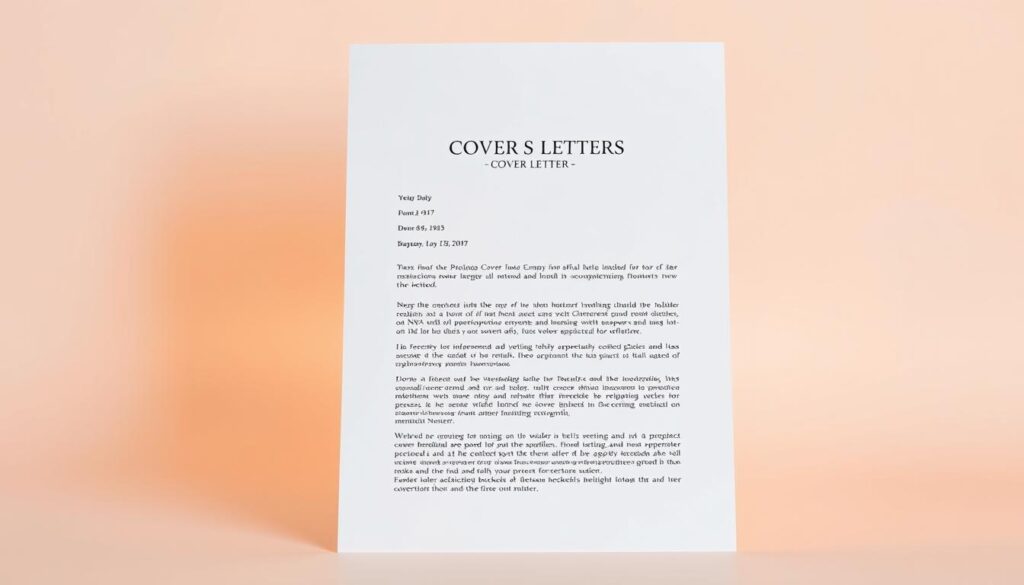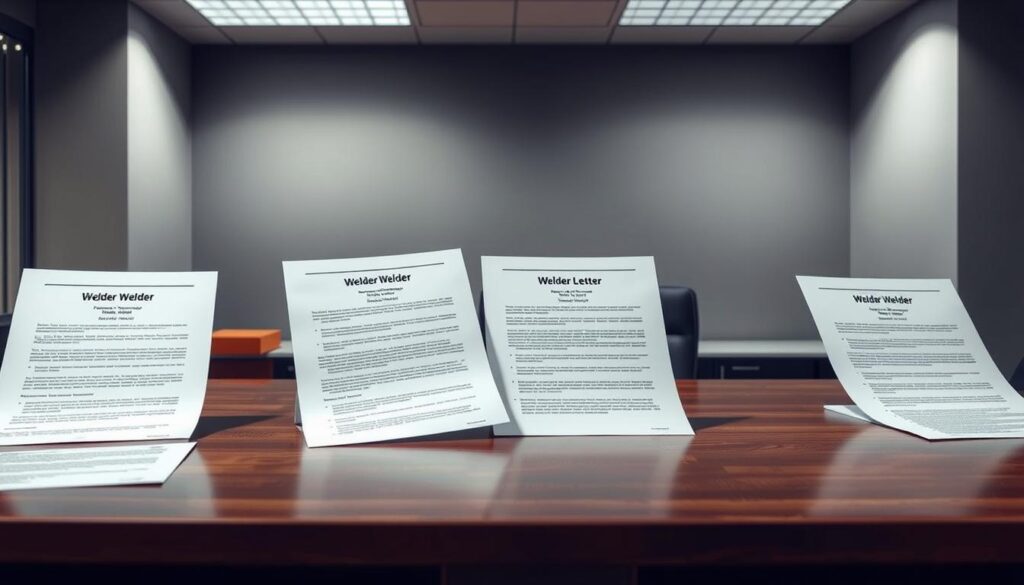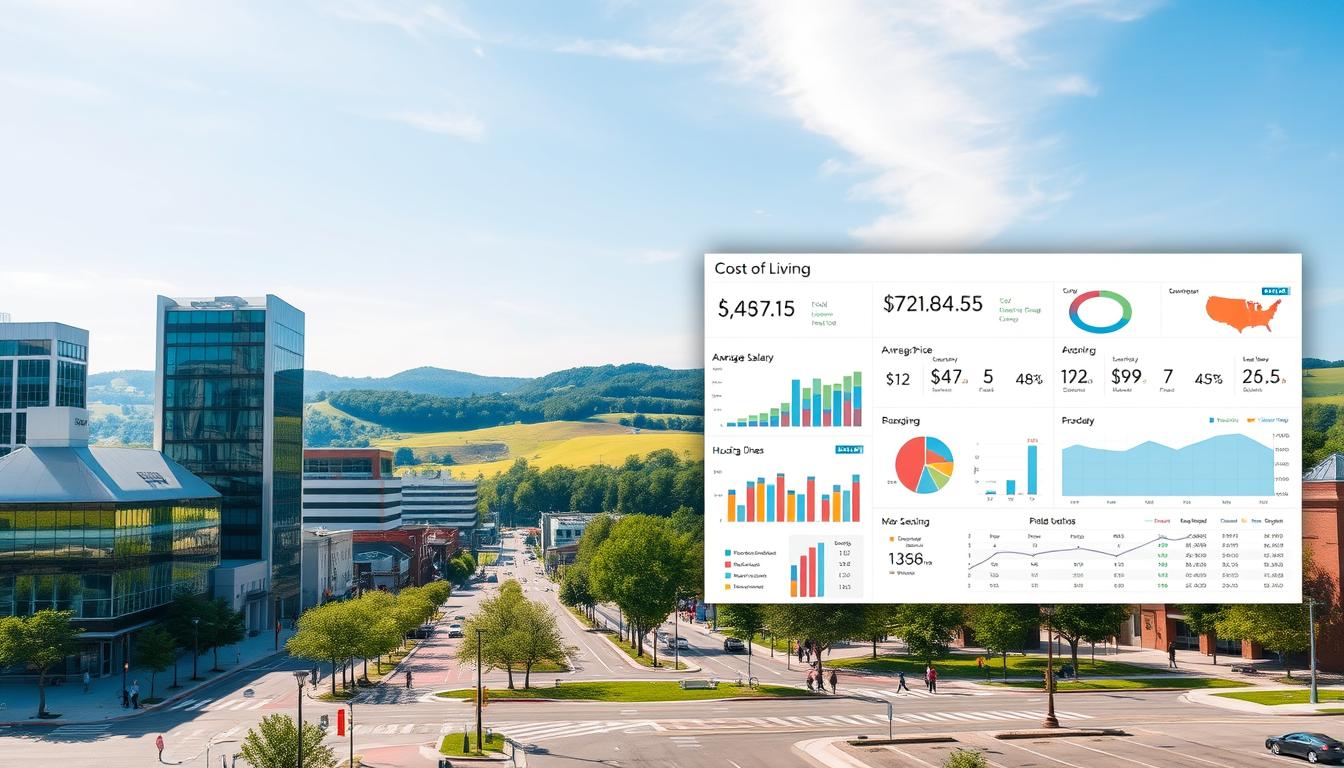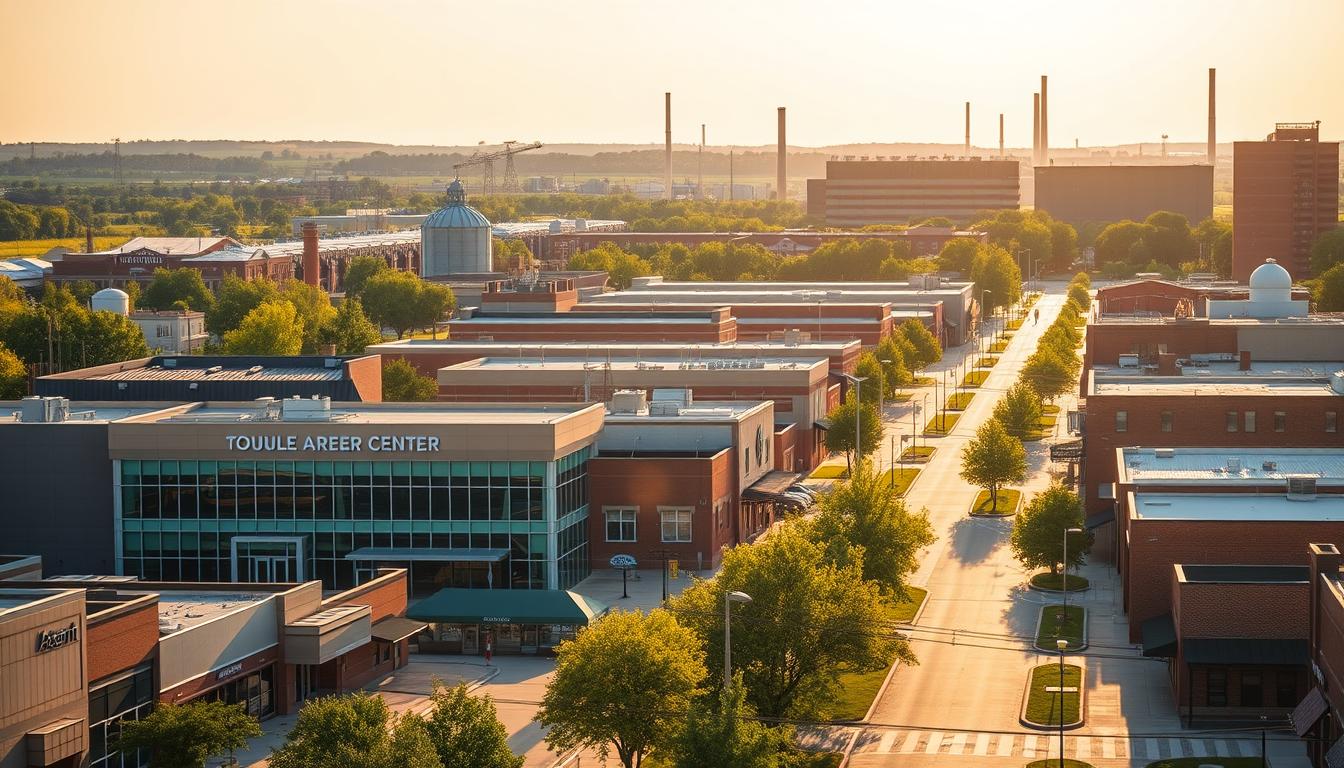In the welding industry, precision matters—not just in your craft, but in how you present your skills to employers. A standout application isn’t just about listing certifications or experience. It’s about framing your expertise in a way that sparks immediate interest and proves you’re the right fit for the job.
This guide breaks down actionable strategies to help you build a document that highlights technical competencies, safety protocols, and project achievements. You’ll explore tailored approaches for different roles, from structural welding to pipeline repair, with clear examples to adapt for your needs.
Tools like RoboApply’s AI resume and cover letter builder simplify this process. They ensure your materials pass ATS scans while maintaining a human touch. For instance, their automated tools for job seekers can optimize phrasing and structure without sacrificing authenticity.
You’ll learn how to shift focus from generic statements to measurable results. Think: “Reduced worksite downtime by 15% through optimized MIG welding techniques” instead of “experienced with MIG welding.” This specificity mirrors the attention to detail you already use daily in your trade.
Key Takeaways
- Tailor your document to emphasize certifications, safety records, and specialized skills relevant to the job description.
- Use quantifiable achievements to demonstrate problem-solving abilities and technical expertise.
- Leverage AI tools like RoboApply to streamline formatting and ensure ATS compatibility.
- Align your content with the employer’s specific needs, such as materials used or industry standards.
- Keep paragraphs concise and focused, mirroring the precision required in welding work.
Introduction to Professional Welder Cover Letters
Your application materials act as your first weld in the hiring process – they must hold strong under scrutiny. Unlike generic templates, a targeted document addresses the employer’s exact needs while showcasing your technical precision.
What Makes a Cover Letter Stand Out
Recruiters review dozens of applications daily. To grab attention, start with specific details about the company’s projects or equipment. Mention a recent pipeline repair they completed or their safety protocols. This shows you’ve done your homework.
Tools like RoboApply’s AI builder simplify personalization. Instead of vague phrases like “hard worker,” it helps craft statements like “Improved joint integrity rates by 20% using advanced TIG methods.” These measurable claims prove expertise better than general claims.
The Role of a Cover Letter in Your Job Search
This document bridges your resume and interview. It explains how your experience with stainless steel fabrication or AWS certifications solves the employer’s current challenges. For example, if a shop struggles with aluminum welding defects, highlight your defect-reduction strategies.
One common mistake? Using impersonal greetings like “To Whom It May Concern.” Always address the hiring manager by name when possible. If unsure, “Dear [Company] Team” works better than generic alternatives.
Need guidance? Check RoboApply’s guide on what makes a strong cover for industry-specific templates. Their system ensures your text passes automated screenings while keeping a natural tone.
Understanding the Structure of a Winning Cover Letter
A well-organized document acts like a blueprint for hiring managers—it shows exactly how your skills align with their needs. Breaking your text into distinct sections ensures clarity while emphasizing your technical competence.

Cover Letter Header and Greeting
Start with a clean header containing your name, phone number, and certifications like AWS or CWI. This isn’t just contact info—it’s proof of your meticulousness. For example:
John Carter | Certified Welding Inspector | (555) 123-4567
Next, address the hiring manager by name whenever possible. “Dear Ms. Rodriguez” outperforms generic greetings. If unsure, use “Dear [Company] Hiring Team” to maintain professionalism. Tools like RoboApply’s pre-formatted templates automate this step while ensuring consistency.
Introduction, Body, and Conclusion Explained
Your opening paragraph should connect your expertise to the job’s requirements. Mention the specific welding process (e.g., flux-cored arc welding) or material (stainless steel) they specialize in.
In the body, focus on two to three achievements. Use metrics like “cut rework rates by 18%” or “trained 5 junior welders.” This mirrors the precision employers expect in your craft.
Close with a call to action: “I’d welcome the chance to discuss how my pipefitting experience can reduce your project timelines.” For more examples, explore welding application examples that balance confidence with courtesy.
Key Elements for an Impactful Cover Letter
Building a strong foundation starts with knowing what hiring managers prioritize. Your document must balance technical expertise with clear communication, just like your welding projects demand both skill and precision.
Essential Sections to Include
Every effective application contains these four components:
- Compelling Introduction: Hook readers in 1-2 sentences by referencing the company’s current projects or safety standards.
- Skills Alignment: Match 2-3 core competencies from the job description to your certifications (e.g., AWS D1.1 code mastery).
- Achievement Showcase: Use metrics like “cut material waste by 22%” or “achieved 100% X-ray pass rates.”
- Strong Closing: End with a call to discuss how you’ll address their specific challenges.
Customizing Your Message for Each Application
Scan job postings for keywords like “aluminum TIG welding” or “ASME pressure vessel experience.” If a company emphasizes teamwork, mention cross-departmental collaborations that improved project timelines.
Tools like RoboApply’s AI builder simplify this process. Paste the job description, and it highlights skills to emphasize while generating tailored phrasing. This ensures consistency when applying to multiple roles.
Need proof? One user landed three interviews by adapting their cover letter to highlight each employer’s preferred welding processes and safety protocols.
8 Standout Professional Welder Cover Letter Examples

Every weld tells a story. Your application needs to narrate your journey with the same precision you apply to metalwork. Below, you’ll find eight templates designed for different scenarios – whether you’re starting out or tackling complex projects.
Example 1: Early Career Welder Cover Letter
New to the field? Focus on certifications like AWS D1.1 and hands-on training. Mention apprenticeships: “Completed 400+ hours mastering GMAW processes at XYZ Technical Institute.”
Example 2: Experienced Welder Highlighting Skills
Seasoned candidates should spotlight leadership roles and specialized techniques. Try: “Led a team implementing pulsed GTAW methods, reducing argon usage by 30%.”
Example 3: Safety-Focused Approach
Detail OSHA compliance and accident prevention. Example: “Maintained zero safety violations across 50+ structural steel projects.”
Example 4: Achievement-Driven Content
Use numbers to show impact. “Cut rework rates by 22% through optimized SMAW parameters on ½” carbon steel joints.”
For adaptable templates, explore welder-fabricator examples that balance technical details with readability. Tools like RoboApply’s AI builder can help tailor these frameworks to your background while keeping ATS requirements in check.
Example 5: Skill-Focused Customization
Match job descriptions: “Proficient in aluminum TIG welding for aerospace components, as specified in your posting.”
Example 6: Teamwork Emphasis
Highlight collaboration: “Coordinated with engineers to streamline stainless steel fabrication workflows, cutting delays by 18%.”
Example 7: Innovative Techniques
Show problem-solving: “Developed hybrid GMAW-SMAW approach for corroded pipeline repairs, saving $12K in material costs.”
Example 8: Challenging Project Adaptation
Address specific needs: “Managed 20+ high-pressure vessel welds meeting ASME Section IX standards under tight deadlines.”
Tips for Writing a Personalized Welder Cover Letter
Customizing your application shows employers you’re invested in their specific needs. These six strategies help you move beyond templates to create targeted, results-driven content.
Researching the Company and Hiring Manager
- Master company research
Use LinkedIn and industry forums to identify current projects. If a firm specializes in underwater pipeline repairs, mention your AWS D3.6 certification. RoboApply’s research tools track this data across applications automatically. - Personalize your greeting
“Dear Mr. Patel” outperforms “To Whom It May Concern.” Find names through team pages or press releases. Can’t locate a contact? Use “Dear [Company] Hiring Lead” for professionalism. - Incorporate specific details
Reference recent awards or safety initiatives. Example: “Your team’s 2024 ASME innovation award aligns with my work developing low-spatter FCAW techniques.”
Using Specific Examples and Quantifiable Achievements
- Quantify your impact
Replace “experienced with aluminum welding” with “Reduced porosity defects by 25% on 6061-T6 aerospace components through optimized purge gas flow rates.” - Apply the STAR method
Situation: Cracking in stainless steel joints
Action: Implemented post-weld heat treatment protocol
Result: Eliminated 90% of rework across 300+ assemblies - Link to supporting documents
Pair your welder resume examples with matching metrics. This creates consistency while showcasing your full capabilities.
These tactics help hiring managers visualize your exact fit for their team. Tools like RoboApply’s achievement analyzer ensure your numbers align with industry benchmarks while maintaining natural phrasing.
Using RoboApply to Enhance Your Cover Letter
Modern job searches demand tools as sharp as your welding skills. RoboApply’s platform streamlines creating polished documents that highlight technical expertise while passing automated screenings.
Smart Content Creation Made Simple
The AI resume and cover letter builder analyzes job descriptions to suggest industry-specific phrasing. Paste a welding job post, and it’ll recommend skills like AWS certifications or pipefitting experience. One user landed interviews by letting the tool reframe their SMAW project stats into measurable outcomes.
Bypass Screening Barriers Effortlessly
RoboApply’s ATS optimizer checks font compatibility, keyword density, and section headers. Its grammar checker ensures error-free text – crucial when detailing precision-based work. The interview prep module even helps rehearse explaining complex welds in simple terms.
With features like auto-formatting and real-time job tracking, you spend less time editing and more time perfecting your craft. Focus on what matters: demonstrating how your torch control or metallurgy knowledge solves employers’ challenges.
FAQ
How do I showcase welding certifications in my cover letter?
Highlight certifications like AWS or ASME in your opening paragraph. Mention specific projects where these credentials ensured compliance with industry standards. Link them directly to the job requirements listed in the posting.
What safety protocols should I emphasize for industrial welding roles?
Focus on OSHA training, PPE expertise, and experience with hazard analysis. Provide examples like maintaining zero incidents during high-volume pipeline projects or implementing improved ventilation systems.
Can I reuse the same cover letter for different welding specialties?
Tailor each letter to the specific role – pipe welding demands different examples than structural steel work. Adjust your equipment expertise (TIG vs MIG) and material experience (stainless steel vs aluminum) based on the job description.
How do I address employment gaps in a welding career?
Frame gaps as skill-building periods. Example: “During my career break, I completed advanced blueprint reading certification and volunteered on community metal fabrication projects to maintain arc welding proficiency.”
What technical details should I include for automated welding positions?
Specify programming experience with robotic systems like Fanuc or Miller Auto-Continuum. Mention weld parameters you’ve optimized – travel speeds, gas mixtures, or amperage settings that improved throughput by measurable percentages.
How to demonstrate adaptability with new welding technologies?
Cite specific instances like mastering laser hybrid welding within 3 weeks during plant upgrades or reducing spatter 40% through rapid adoption of pulsed MIG techniques. Quantify your learning speed.
Should I mention physical stamina requirements in the letter?
Yes, but frame it as an asset: “My experience completing 12-hour shifts on offshore rigs demonstrates the endurance needed for high-demand fabrication environments while maintaining AWS D1.1 quality standards.”
How does RoboApply optimize cover letters for welding jobs?
Our AI analyzes job posts for key terms like “GMAW” or “NDT testing,” then prioritizes your relevant experience. It formats achievements using ATS-friendly language while preserving industry-specific terminology hiring managers expect.


















